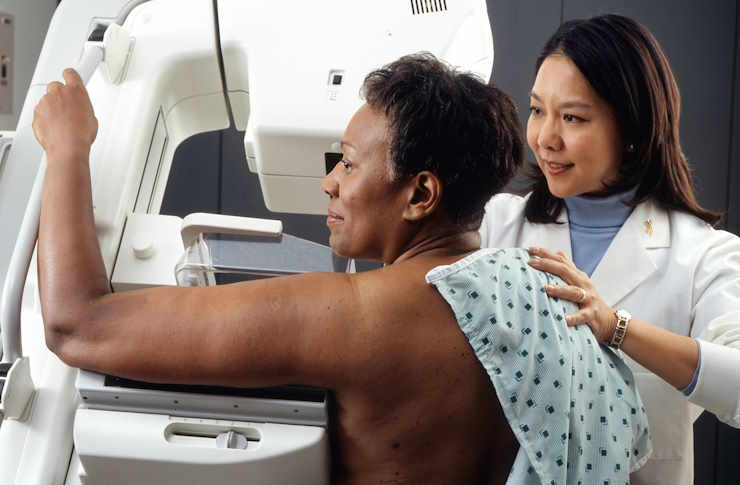Understanding the Relationship Between Radiation and Prostate Cancer Risk
Explore the latest studies on the impact of radiation on prostate cancer risk. Discover insights into how radiation exposure may affect the development and progression of prostate cancer. Gain valuable knowledge about potential risk factors and preventative measures that can help enhance your understanding of this critical health issue.

Does Medical Radiation Increase Prostate Cancer Risk?
Medical imaging procedures involving radiation, such as CT scans and X-rays, contribute to cumulative radiation exposure throughout a person’s lifetime. Research indicates that while the radiation doses from individual medical procedures are generally low, repeated exposure may incrementally increase cancer risk. Studies examining healthcare workers and patients with frequent medical imaging show modest increases in various cancer types, though specific data on prostate cancer remains limited.
The key factor is cumulative dose over time. A single CT scan delivers approximately 7-20 millisieverts of radiation, while chest X-rays provide much lower doses. Men who undergo multiple abdominal or pelvic imaging procedures may experience slightly elevated prostate cancer risk, though this increase appears minimal compared to other established risk factors like age and family history.
How Does Occupational Radiation Exposure Affect Risk?
Workers in nuclear facilities, medical radiology departments, and aviation face regular low-level radiation exposure. Long-term studies of these populations provide valuable data about radiation and cancer relationships. Research following nuclear workers for decades shows small but measurable increases in certain cancer types, including prostate cancer.
Aviation personnel experience unique radiation exposure from cosmic rays at high altitudes. Studies of airline pilots and flight attendants indicate slightly elevated cancer rates overall, though prostate cancer-specific data shows mixed results. The radiation doses experienced by commercial aviation workers are relatively low, typically 2-5 millisieverts annually, comparable to medical workers.
What Role Does Age Play in Radiation Sensitivity?
Age significantly influences how radiation exposure affects prostate cancer risk. Younger tissues generally show greater sensitivity to radiation damage, but prostate cancer typically develops later in life. This creates a complex relationship where early-life radiation exposure may contribute to cancer development decades later.
Men exposed to radiation before age 30 may face higher long-term prostate cancer risk compared to those exposed later in life. However, the absolute risk increase remains small, and age-related factors like hormonal changes and genetic expression often play more significant roles in cancer development than past radiation exposure.
Can Radiation Therapy Itself Cause Secondary Cancers?
Ironically, radiation therapy used to treat one cancer can potentially increase the risk of developing secondary cancers, including prostate cancer. Men who received radiation treatment for testicular cancer, lymphoma, or other pelvic region cancers show slightly elevated prostate cancer rates years later.
Modern radiation therapy techniques have significantly improved precision and reduced unnecessary exposure to surrounding tissues. Advanced methods like intensity-modulated radiation therapy (IMRT) and proton beam therapy minimize radiation scatter to healthy prostate tissue during treatment of nearby cancers, reducing secondary cancer risk compared to older techniques.
Are There Effective Prevention Strategies?
Prevention strategies focus on minimizing unnecessary radiation exposure while maintaining essential medical care. Patients should discuss the necessity and frequency of radiation-based imaging with healthcare providers, ensuring procedures provide clear medical benefits that outweigh potential risks. Keeping personal medical records helps track cumulative radiation exposure over time.
In the United States, medical facilities must follow strict radiation safety protocols established by the Nuclear Regulatory Commission and state agencies. These guidelines ensure that radiation doses remain as low as reasonably achievable while maintaining diagnostic quality. Patients can request dose information for procedures and discuss alternative imaging methods when appropriate.
What Do Current Studies Reveal About Risk Levels?
Recent large-scale epidemiological studies provide reassuring evidence about radiation and prostate cancer risk. The absolute risk increase from typical medical radiation exposure appears minimal, with most studies showing less than 1% additional lifetime risk for men with moderate cumulative exposure.
A comprehensive analysis of nuclear workers exposed to chronic low-level radiation found a statistically significant but small increase in prostate cancer risk, estimated at approximately 0.3% per 100 millisieverts of cumulative exposure. For perspective, the average American receives about 6 millisieverts of background radiation annually from natural sources, making occupational exposures relatively modest for most workers.
Understanding the relationship between radiation and prostate cancer risk requires balancing scientific evidence with practical healthcare needs. While studies demonstrate measurable associations between radiation exposure and cancer development, the absolute risk increases remain small for most individuals. Men concerned about radiation exposure should focus on proven risk reduction strategies, including maintaining healthy lifestyles, regular medical screenings, and informed discussions with healthcare providers about the necessity of radiation-based procedures. The benefits of appropriate medical imaging and radiation therapy typically far outweigh the small additional cancer risks they may present.
This article is for informational purposes only and should not be considered medical advice. Please consult a qualified healthcare professional for personalized guidance and treatment.




